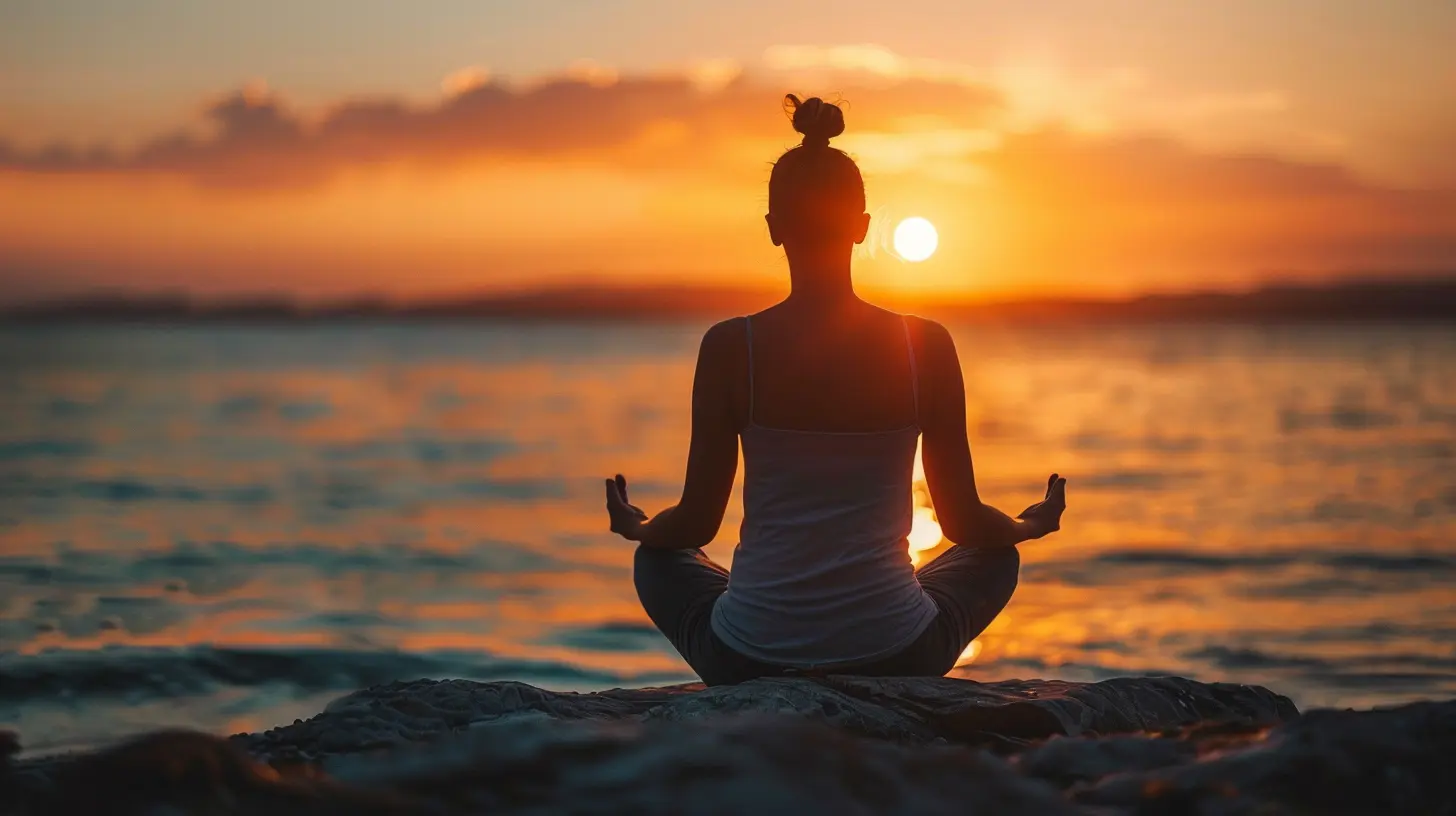The Role of Breathing Techniques in Meditation Practice
27 May 2025
Meditation, in its simplest form, is a practice that allows us to connect with our inner selves, calm our minds, and find some peace amidst the chaos of daily life. But here's the thing—meditation can sometimes feel downright elusive. You sit down, close your eyes, and suddenly it feels like your brain is throwing a party, right? Well, this is where breathing techniques come into play.
Breathing is something we do every single moment of our lives, but when was the last time you paid attention to how you're breathing? If you're like most people, probably not often. Yet, mastering your breath can be the key to unlocking more profound meditation experiences. Let's dive deep into how breathing techniques play a crucial role in meditation practice.

Why Breathing Matters in Meditation
Have you ever noticed that your breath changes depending on how you're feeling? When you're stressed, it's shallow and fast. When you're relaxed, it's deep and slow. This isn't just a coincidence—your breath and your mind are closely connected.In meditation, we use breathing as a tool to bring our wandering thoughts into focus. Think of your breath as an anchor. When your mind starts drifting off into a sea of thoughts—whether it's a to-do list or that awkward thing you said three years ago—your breath can pull you back to the present moment.
But it’s more than just a mental connection. The way we breathe can also influence our physical state. Deep, controlled breathing signals your nervous system to relax, reducing stress hormones and calming your body. It's like hitting the "reset" button on your entire system.
The Science Behind Breathing and Meditation
Before we get into the nitty-gritty of different breathing techniques, let’s take a quick look at the science. Researchers have found that certain breathing patterns can trigger the parasympathetic nervous system, which is responsible for calming the body. This is sometimes called the "rest and digest" state, as opposed to the "fight or flight" state we often find ourselves in when we're stressed.Breathing deeply and slowly sends a message to your brain: "Hey, it's all good. You can relax now." This is why breathing techniques are such a powerful tool in meditation—they help you shift from a state of tension to one of relaxation, making it easier to meditate and stay focused.

Common Breathing Techniques in Meditation
Now that we’ve established why breathing is so important, let’s get into some of the most popular techniques you can incorporate into your meditation practice. Each one comes with its own unique benefits, so feel free to try out a few and see which resonates with you.1. Diaphragmatic Breathing (Belly Breathing)
Let’s start with the basics. Diaphragmatic breathing—also known as belly breathing—is probably the most straightforward technique you'll come across. When we breathe normally, many of us tend to take shallow breaths, filling only the upper part of our lungs. With belly breathing, you focus on taking deep breaths from your diaphragm, rather than your chest.How to Do It:
- Sit comfortably with your back straight.- Place one hand on your chest and the other on your abdomen.
- Inhale deeply through your nose, allowing your belly (not your chest) to rise.
- Exhale slowly through your mouth, letting your belly fall.
The idea here is to tune in to the natural rhythm of your breath and let it become the focal point of your meditation. Diaphragmatic breathing is great for beginners because it’s simple and helps establish a physical connection to your breath.
2. 4-7-8 Breathing
This technique is a personal favorite for many meditators and even professionals. Why? Because it’s perfect for calming the mind and body when you’re feeling anxious or restless. The 4-7-8 technique involves inhaling, holding, and exhaling for specific counts, which helps regulate your breath and slow down your heart rate.How to Do It:
1. Inhale quietly through your nose for a count of 4.2. Hold your breath for a count of 7.
3. Exhale completely and audibly through your mouth for a count of 8.
Repeat this cycle at least four times. The longer exhale helps you expel more carbon dioxide, which has a calming effect on your nervous system. It’s like giving your brain a gentle hug.
3. Nadi Shodhana (Alternate Nostril Breathing)
If you’re looking for something that brings balance to both your mind and body, Nadi Shodhana might be your go-to. In traditional yoga, this is known as a cleansing breath, believed to clear energy channels and bring harmony to your left and right brain hemispheres.How to Do It:
- Sit comfortably and close your eyes.- Using your right hand, close your right nostril with your thumb.
- Inhale deeply through your left nostril.
- Close your left nostril with your ring finger and release your right nostril.
- Exhale fully through your right nostril.
- Now, inhale through your right nostril, close it, and exhale through your left nostril.
Continue alternating nostrils for several rounds. Not only does this technique help with focus, but it’s also said to improve mental clarity and reduce stress. It’s like giving your brain a tune-up.
4. Box Breathing (Square Breathing)
Box breathing is a simple yet powerful technique used by everyone from athletes to Navy SEALs to help manage stress and stay centered. The idea is to create a steady, balanced rhythm by inhaling, holding, exhaling, and holding again, all for the same duration.How to Do It:
- Inhale through your nose for a count of 4.- Hold your breath for a count of 4.
- Exhale through your mouth for a count of 4.
- Hold again for a count of 4.
Repeat this cycle for several minutes. Box breathing can be particularly useful if you’re feeling scattered or overwhelmed, as it encourages mindfulness and brings a sense of stability. It’s like pressing the "pause" button on life.
5. Kapalabhati (Breath of Fire)
For those days when you need an energy boost, Kapalabhati, or "breath of fire," is your go-to technique. This dynamic breathing method involves quick, forceful exhales followed by passive inhales. It’s invigorating and can help clear the mind while energizing the body.How to Do It:
- Sit in a comfortable position.- Take a deep inhale, and then begin to exhale forcefully through your nose, contracting your abdominal muscles.
- Allow the inhales to happen passively between each forceful exhale.
Start slowly and work up to a faster pace as you get more comfortable. Kapalabhati is a powerful technique that stimulates your mind and body, making it ideal for morning meditation or whenever you need a pick-me-up.

How to Incorporate Breathing Techniques into Your Meditation Practice
Now that you're armed with several breathing techniques, how do you actually incorporate them into your meditation practice? It’s simpler than you might think!Start Small
If you’re new to both meditation and breathing techniques, start with just a few minutes of focused breathing. You don’t need to sit for an hour to experience the benefits. Even five minutes can make a huge difference in your day.Combine with Mindfulness
One of the best ways to incorporate breathing techniques is by pairing them with mindfulness meditation. As you breathe, simply observe the sensations in your body. Notice how the air feels as it enters your nostrils, fills your lungs, and leaves your body. This practice not only grounds you in the present moment but also deepens your awareness of your breath.Use Your Breath as an Anchor
Whenever your mind starts to wander (and it will—trust me), bring your focus back to your breath. Don't stress about it; just gently guide your attention back. Over time, this will become second nature, and you'll find it easier to stay present during your meditation sessions.Experiment and Find What Works
The beauty of meditation is that there's no one-size-fits-all approach. You might find that you enjoy 4-7-8 breathing in the evening but prefer Kapalabhati in the morning. Experiment with different techniques and see what resonates with you.
Final Thoughts: Breathing as the Bridge Between Body and Mind
Breathing techniques aren't just about improving your meditation practice—they’re about improving your overall well-being. Your breath is the bridge between your body and mind, and by learning to control it, you can reduce stress, improve focus, and find a deeper sense of inner peace.Whether you’re a seasoned meditator or just starting out, incorporating breathing techniques into your routine can transform your practice. So, the next time you sit down to meditate, pay attention to your breath. It's more powerful than you think.
all images in this post were generated using AI tools
Category:
MeditationAuthor:

Ember Forbes
Discussion
rate this article
2 comments
Archer Perez
Breathing techniques can be the secret ingredient to your meditation journey! Just a few deep breaths can transform your practice, helping you find calm and clarity. So inhale positivity and exhale stress—happy meditating!
June 7, 2025 at 3:04 PM

Ember Forbes
Absolutely! Breathing techniques are essential in meditation, enhancing focus and promoting relaxation. Thank you for the insightful reminder!
Runevale Palmer
Breathing techniques are essential in meditation, enhancing focus and deepening the overall practice experience.
May 27, 2025 at 3:29 AM

Ember Forbes
Thank you for your insightful comment! I completely agree that breathing techniques play a vital role in enhancing focus and enriching the meditation experience.


